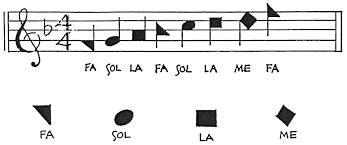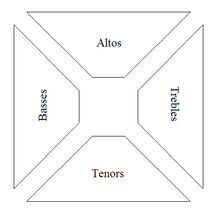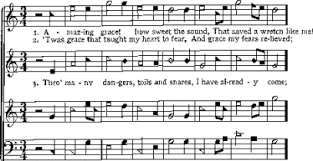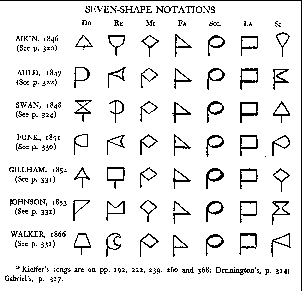|
|
Over time, however, the Aiken seven-shape system became the standard, and the majority of tune books published after 1850 and up through the 1950s were written with the Aiken shapes.
Shaped Note Music Today Although shaped-note music was pushed out of the mainstream due to the Better Music movement, it still survives and is practiced today. Preserved mostly in southern, rural churches, shaped-note music experienced a revival during the Folk Revival of the 1960s & 70s. Today you can find many shaped-note singers all over the US, Canada, Europe, Australia, New Zealand, and parts of Asia. Singers will travel all over the world for a singing, and because it does not cost anything to sing, singers only need to worry about travel. Today, shaped-note singing is just as much a social activity as it is a musical or religious one. Many singers travel to see friends, and many continue singing after singing all day! While the words of the songs are overtly religious, many people of different backgrounds, religions, and creeds gather to sing together. Not to mention, there is also food involved! Many of these traditions and groups still follow the traditional rules of the singing schools, except now people get to take turns leading songs, so everyone has a chance to be in the middle of the powerful sound. You can find out more about local North Carolina singings on the Join Us page! And to learn more about how to start singing shape note music, check out the "For Newcomers" resources here. |
|
|



